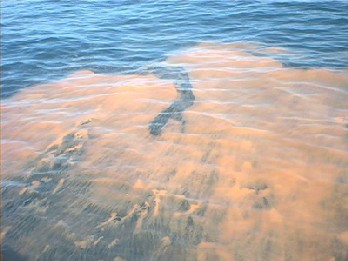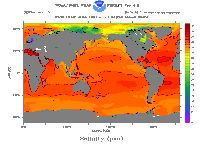Click on image for full size
Courtesy of NOAA
Related links:
Robots Watch out for Poisonous Plankton!
News story originally written on January 30, 2003
Tiny algae that float in the sea may look harmless but certain species are toxic and, in large numbers, they are able to kill fish, poison seafood and even choke swimmers. Now special underwater robots have been developed to look for the algal plankton and alert researchers when their numbers reach dangerous levels!
These types of algae are single-celled, microscopic and, like plants, photosynthesize. They are plankton, so most of their life is spent floating in ocean water. They cannot swim like fish, but instead float, being carried wherever the currents take them.
Most species of algae are very important for life in the sea because they are the start of food chains. Animals such as clams, fish and even whales could not survive without algae. However, a few types of algae contain chemicals that are toxic to other creatures. They are especially dangerous when they grow so fast that they darken the ocean water with a reddish cloud called a red tide.
Now researchers have developed underwater robots to patrol the Gulf of Mexico looking for an algae called Karenia brevis. The robots are called autonomous underwater vehicles, or AUVs. They look like small airplanes, about two-meters long, and glide underwater. After they glide down to the ocean floor, they are able to float to the surface, tell researchers in Florida where in the ocean they are located, and then begin to glide down again. The gliders carry sensors to detect the algae and record the salinity and temperature of seawater so that scientists can study when the tides form.
The researchers are able to survey larger areas of the ocean with the AUVs than they could before, watching for red tides year-round. They hope that with the information from their robots and satellite images, they will be able to alert people living near the coast if a giant cloud of algae is approaching their coastline.















